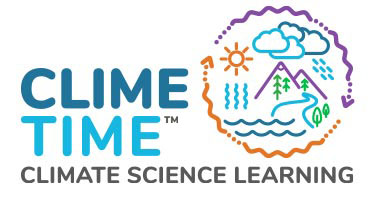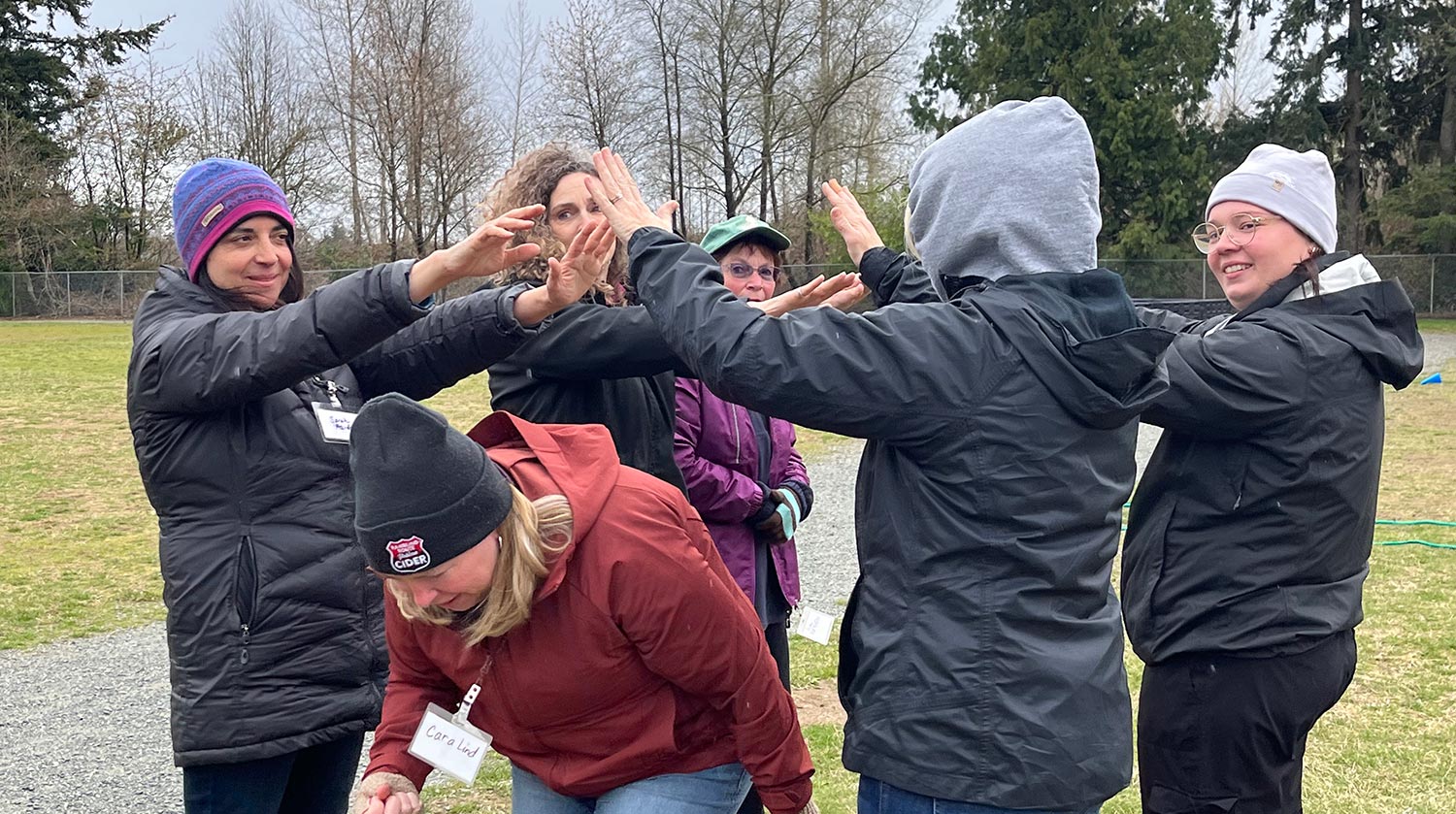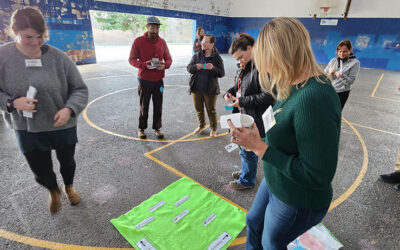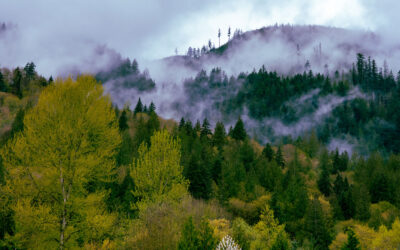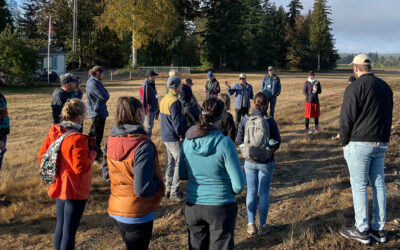The blustery winds of October, the ice encrusted fields of February, and the pelting rain of March and April, provided the backdrops for the Teaching for the Climate Collaborative’s four stand-alone Teaching Outside workshops.
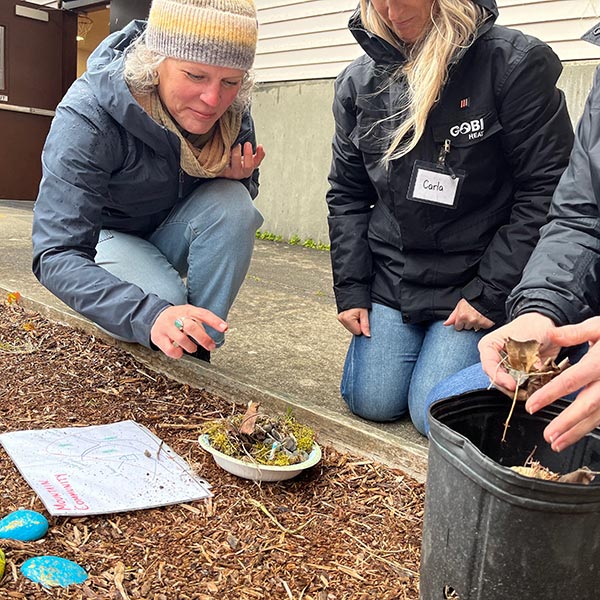
Designing solutions to mitigate warming salmon habitat.
Ironically, the weather was the perfect setting for learning about teaching outside in the Pacific Northwest. Teachers were able to directly apply and experience outdoor risk management strategies while participating in learning activities outside.
Before teachers braved the windy, cold, or rainy weather, we spent time thinking about the potential risks that occur when you bring students outside of the four walls of the classroom. We were inspired by the ensuing discussion about the benefits of outside learning despite exposure to inclement weather and other risks. Teachers discussed benefits of outdoor learning such as connecting students with the world and each other, reaching all learners and learning styles, sparking curiosity and wonder, forming a relationship with place, incorporating social-emotional learning, and allowing for physical exercise. This reaffirmed that “stretching our edge” of what is comfortable when engaging in outdoor teaching is worth the risks. Bringing students outside can feel challenging but the growth and benefits that we see in ourselves and our students is reason to continue stretching our edges as teachers and learners.
We applied our learning of risks and benefits by moving outdoors for several outdoor activities that teachers felt were effective and engaging. Our goal was to provide several different ways of outdoor learning such as playing games to model natural phenomena, using found materials to engineer solutions for problem-based learning, and engaging in inquiry based nature journaling. After participating in these activities, teachers commented:
“This was the best 2 hours! I have tools ready to use on Monday.”
“Thank you for the wonderful in-service. The P.D. was focused and I learned so many strategies to quickly and safely engage students in outdoor learning.”
“This workshop was very engaging! I can’t wait to share the activities with my team.”
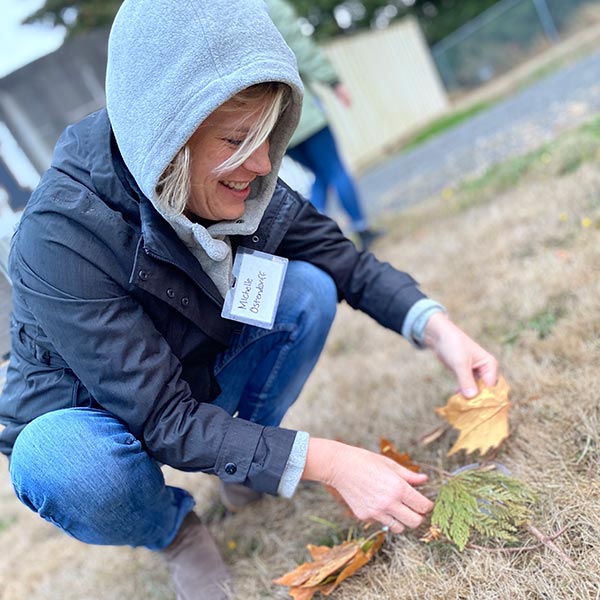
Finding outdoor materials to engineer erosion prevention strategies.
We are left feeling inspired by the tools and resources that teachers later brought back to their classroom students. There were some incredible examples of educators stretching their edges by teaching outside. Through the work of these educators, hundreds of students in Whatcom County had the opportunity to learn outside during their school day. Here are anonymous examples of activities that Whatcom County teachers facilitated for their students after participating in the training:
“[We took our] class outside to explore water in nature…[We] collected natural materials such as leaves, bark, soil, grass, etc. to see how water reacts to these materials by placing a drop on each. Does it absorb or bead up on the surface?” ~3rd Grade Teacher
“Students listened to Roger Fernandes’ audio story “Ay-ay-esh” as part of a unit of inquiry at our school. We used it to inspire us to go into our school’s woods and gather material that had already fallen to the ground… We returned to our classroom to try to make “baskets” that could hold water. We listened to “Ay-ay-esh” a second time, discussed why our “baskets” worked or did not work, what we might need to do differently, and then we tried again to make a successful vessel for holding water. We found we could hold water a bit longer each time and found success when we persevered and kept trying new things.” ~2nd Grade Teacher
“[We] Read Busy Spring by Sean Taylor and Ale Morss to learn about the ways the earth wakes up in spring. Students [went] on a nature walk around the school property searching for signs of spring: (buds on trees, bulbs beginning to pop up). Students drew a picture of their findings..and returned outside for a second sign of spring hunt after 2-3 weeks to compare the changes and make a second drawing.” ~Title Teacher, Elementary Intervention
The Teaching for the Climate Collaborative has so much gratitude for these educators for fostering interconnection, building relationships, and inspiring wonder between their students, their peers, and the world.
